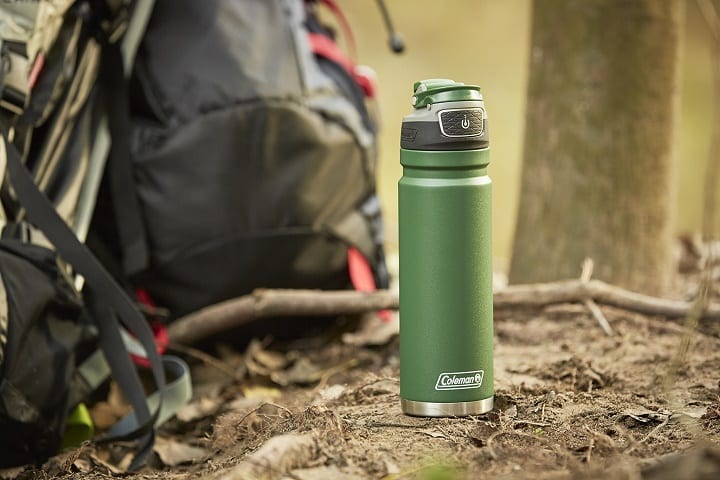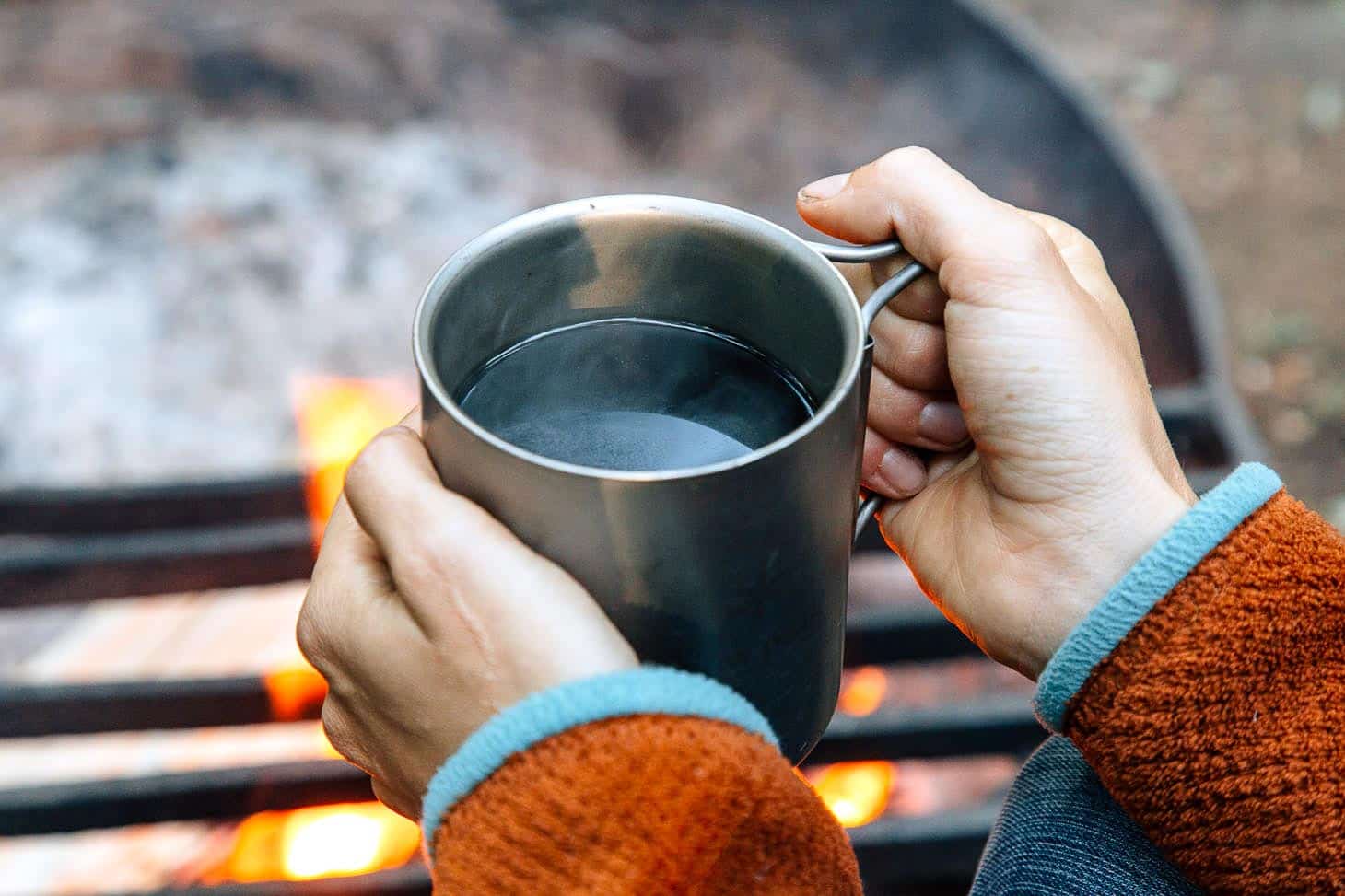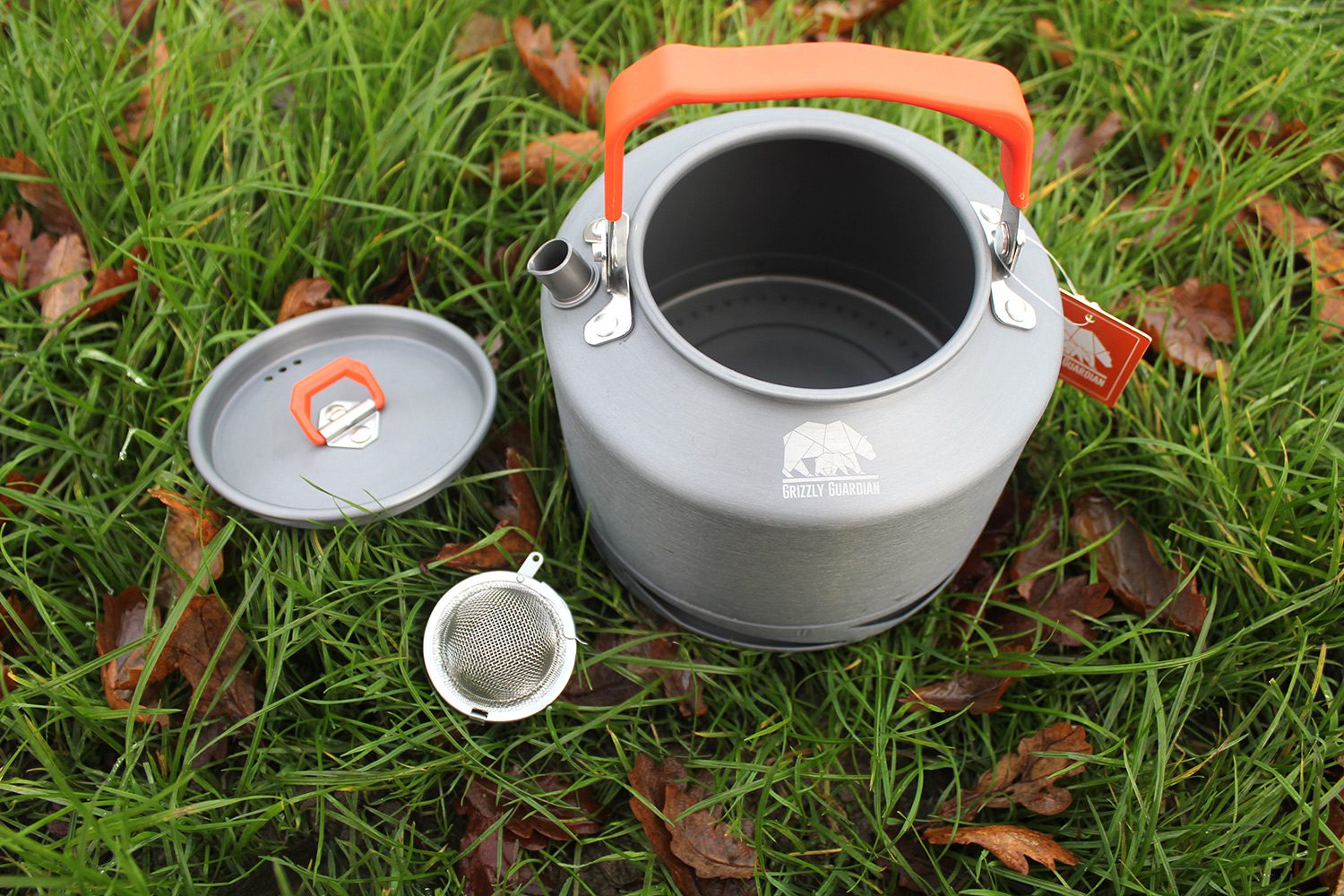Planning a camping trip and wondering how much water you should bring?
We’re here to help.
Water is an essential part of any camping trip, but figuring out precisely how much you should pack isn’t easy. Thankfully, whether you’re dry camping in Bryce Canyon or backpacking in Death Valley, we have the information you need to determine your camping water needs.
Up next, we’ll walk you through the process of calculating how much water to bring camping on your next adventure so you’ll be able to stay hydrated during your trip into the great outdoors.
Questions to ask yourself
There’s no simple answer to the question of how much water you should bring while camping. Rather, it’s up to each camper to determine their water consumption needs based on their unique camping style.
To help you calculate how much water to bring camping, we’ve created a list of the most important questions to ask yourself as you pack.
By asking yourself these questions, you can start to determine your water requirements so that you can stay hydrated in the mountains.
How long is the trip?
The first thing you ought to consider when planning a camping adventure is the length of the trip itself.
Since we all need to drink a certain amount of water each day in order to survive, it stands to reason that you’d need more water for a 5 day trip to Great Smoky Mountains than you would for a weekend venture to Hot Springs National Park.
You can expect to need at least 1 gallon (3.75 liters) of water per person, per day of your trip.
We’ll discuss the nuances of this rough estimate throughout the course of this article, but you can use this rule as a guideline for most of your water needs.
Where are you going?
The destination of your camping trip affects your water needs in a number of ways.
First and foremost, trips to hot and dry locales like Death Valley often require more water than adventures to more mild climates like the Adirondacks. That’s because there’s a higher risk of dehydration in hot climates.
Additionally, some popular parks, such as Joshua Tree, actually forbid visitors from collecting water from streams in order to ensure that there’s enough water available to support local ecosystems.
Therefore, visitors to these areas need to pack more of their own water for their travels.
How many campers in the group?
As you can imagine, a larger group of campers consumes more water than a smaller group.
Indeed, if we estimate that people require about 1 gallon (3.75 liters) of water per day, a group of 4 people would need 4 gallons (15.1 liters) of water per day while a group of 6 would require some 6 gallons (22.7 liters) per day.
Since your water needs will increase drastically with every additional camper on your trip, it’s imperative that you consider the total size of your group when calculating how much water to pack.
Read More : How to Plan A Successful Camping Trip with Friends
What time of the year?
When you go camping is also an important consideration when determining your water needs.
Think about it – We tend to sweat and drink a whole lot more water during the hot summer months than during the frigid winter. While you need to drink water during the winter, most folks find that they don’t need nearly as much each day as they might in the summer.
So, if you suspect that you’ll experience scorching temperatures during your summertime trip to the Grand Canyon, you may want to pack 2 gallons (7.6 liters) of water per person, per day.
On the other hand, a winter trip to Zion might require only the standard 1 gallon (3.75 liters) per person, per day.
Is there access to freshwater sources?
When we talk about bringing water on your camping trips, it’s important to keep in mind that you may have access to fresh water sources during your travels.
For example, most campgrounds have running water available while the majority of campsites along the Appalachian Trail are located near a lake or stream. In these situations, you might be able to pack refillable water bottles instead of carrying water throughout the entirety of your trip.
Read More : How to Purify and Treat Water While Camping
Do you need water for cooking?
While most of our water use while camping is due to our need to stay hydrated, we do also often need water for other tasks, like cooking.
In particular, anyone that packs freeze-dried camping meals will want to pack extra water. That’s because each of these meals requires up to about 16 ounces (0.5 liters) of water to rehydrate.
So, be sure to pack extra water if you need to use it for cooking, too.
Read More : 11 Ways to Boil Water While Camping
Do you need water for cleaning up?
Finally, you’ll want to consider whether you need to have water for cleaning up your camp mess kits and cookwares during your adventures. Washing dishes might not seem like much, but doing so can require at least 1 gallon (3.75 liters) of water per day.
Additionally, if you like to use camp showers, you may want to budget extra water for your calculations. Each camp shower can use up to 5 gallons (19 liters) of water, so add this into your water budget if you like to stay squeaky clean during your trip.
Example of camping scenarios
We can’t possibly cover every possible camping scenario and how much water you might need during your adventures. But, we can provide some insight into how much water to pack on a typical camping trip.
So, to help you get a better idea of how much water you should pack for various types of adventures, here are some classic camping trips and the amount of water that we’d recommend for each of them.
Scenario 1 - 2 person, week-long summer backpacking trip to Shenandoah
For a week-long 2 person summer backpacking trip to Shenandoah National Park, most people will find that they need about 1.5 gallons (5.7 liters) of water per person, per day.
This works out to roughly 21 gallons (79.5 liters) of water in total.
Why?
Well, we increased our estimate of how much water you might need to 1.5 gallons (5.7 liters) per person, per day because of the summertime heat in Shenandoah.
Furthermore, if you’re backpacking, you may be reliant on dehydrated food, in which case, that extra 0.5 gallons (1.9 liters) per person, per day, would be critical for your cooking needs.
Scenario 2 - 5 person weekend fall car camping trip to Yosemite
If you’re going on a 5 person fall car camping trip to Yosemite for the weekend, you’ll likely be okay with about 1 gallon (3.75 liters) of water per person, per day, or about 10 gallons (37.9 liters) total.
That’s because fall temperatures in Yosemite tend to be fairly mild so dehydration is less of a concern. If you’re car camping, you’re probably also not relying too much on freeze-dried food that you would otherwise need to rehydrate.
Plus, there are plenty of freshwater sources at Yosemite campgrounds. So you likely can just bring plenty of water bottles that you can then fill up at the nearest water fountain during your trip.
Scenario 3 - 4 person overnight winter camping trip to Glacier
For a 4 person overnight winter camping trip to Glacier National Park, you would want to pack at least 1.5 gallons (5.7 liters) of water per person, per day or about 20 gallons (75.7 liters) of water total.
We increased the allotment here to 1.5 gallons (5.7 liters) per person, per day because winter campers tend to sip on hot drinks throughout the day.
However, you likely won’t need to carry too much water while winter camping as you can use your stove and cookware to melt snow as needed.
Gaby Pilson
Gaby is a professional mountain guide with a master’s degree in outdoor education. She works primarily in the polar regions as an expedition guide, though she can be found hiking, climbing, skiing, sailing, or paddling in some of the world’s most amazing places when not at work.


